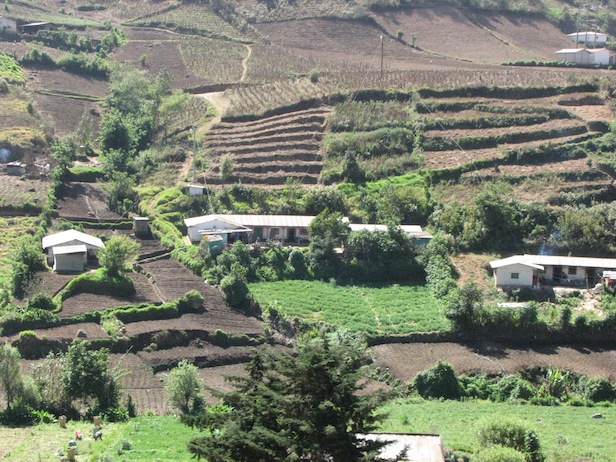The Cuban countryside is a blend of two continents agricultural practices.
Clarify
The Caribbean we were told by Walcott was a fragmented place filled with no one doing anything of importance to remember.
Bardic, or heroic history ignores what is crucial about the Antilles, named for a paradise, discovered as a densely populated place of wildly exotic and impressive people with food enough to sustain millions.
But in this paradise lurked one particular disease, some intoxicating plants, and gold that lay about in the streams, silver deep in the earth and extensive grasslands, luxurious forests and strange, edible animals.
Turtles, turkeys and tomatoes are just the tip of this supposedly unimportant place that shook the world apart, broke the barriers and fused people together as never before.
Background
The revolution
Death stalks the land
food matters
Evolution of a disease
Summary
question | text | economy | map | evidence | behavior | argument
![]()
" . . . a truly spectacular biological success story."
p. 108.

"The uniqueness . . . is measurable."
p. 21.
"the physical uniformity of Indians . . ."
p. 21.
"The Indians died in droves of diseases."
p. 21.
Syphilis; Romantic Love, Chivalry, & Devotion in an age of spreading venereal disease
What do you think Crosby suggests were the effects of venereal disease in Europe ?
Some possibilities are here.
What is the tomato? The plant is a key reminder of the enormous influence of the Columbian exchange at a literal and characteristic cultural level.
Economy
By definition, economy means the relation among players; their psychologically, commercially, financially, and organizationally influenced behavior given the source of their wealth and capacity for exchange among specific goods and services.
The spread of the cattle culture, hide & tallow trade
1497 in Española & 1521 in Mexico . . ."ranching went along with it."
p. 87-91.
Sheep ranching 1497
pp. 93-94.
"The spectacular rise in the population of domesticated animals in these areas was accompanied by an equally spectacular decline in Indian populations; and disease and exploitation do not entirely explain that decline."
grazing disrupted the essential fields of the vegetarian-dependent native peoples.
". . . not as rivals but as immensely valuable additions of their sources of food, clothing, and energy."
p. 99.
Native Amerindian adoption of the horse and cattle as a new way of life (Goajira of Columbia, and others like Chichimecs)
pp. 100-106.
"The arrival of the Old World plants in the Americas, doubled and even tripled the number of cultivatable food plants in the New World."
p. 107.
The ecological realities of overgrazing, slowing population growth and decline of the grassland's hardiness and quality: 1570s in Española and 1580s Mexico.
pp.109-113.
September 19, Crosby The Columbian Exchange, pp. 87-113, & The Transformation, pp. 64-121.
How does this relate to CORE? We are moving from having clarified the Caribbean and Mesoamerica as the focus of a revolution to step two:
Organize is step two in the course and here we deal with how to pull your lists of influences for which the Columbian Exchange was responsible into some logical argument based on the texts.
Summary of the Columbian Exchange's importance.
The Columbian Exchange: Biological and Cultural Consequences of 1492, New York: Greenwood Press, 1972.
Crosby's underlying assumptions from Germs Seeds and Animals.



